Cross country mountain biking embodies the spirit of adventure, offering riders the thrill of navigating rugged terrains with speed and precision. For those who crave the adrenaline rush that comes with conquering steep climbs and technical descents, cross country mountain bikes are the ultimate companion.
These bikes are meticulously designed to deliver a perfect blend of performance, comfort, and control, making them ideal for adventurous riders. Among the notable examples in this category is the TRIFOXBIKE PIONEER, a cross country mountain bike that epitomizes the pinnacle of modern bike engineering.
A key feature that sets the TRIFOXBIKE PIONEER apart is its carbon fiber frame. Carbon fiber is heralded for its superior strength-to-weight ratio, providing a lightweight yet robust structure that enhances a bike's agility and speed. For cross country enthusiasts, this translates to less fatigue during prolonged rides and an ability to swiftly maneuver through tight trails and demanding terrains.
The TRIFOXBIKE PIONEER's carbon frame not only boosts speed but also absorbs vibrations and shocks, offering a smoother and more comfortable ride.
Equipped with dual suspension, the TRIFOXBIKE PIONEER ensures that riders maintain stability and control even on the roughest paths. The suspension system, featuring 120mm of travel, is adept at absorbing shocks from obstacles like rocks and roots, granting riders a seamless and confidence-inspiring experience. This is particularly beneficial for those who relish tackling unpredictable and challenging trails. The dual suspension also improves traction, allowing riders to maintain their momentum and speed without being derailed by uneven ground.
Adding to the bike's remarkable specs is the SHIMANO M6100 groupset, known for its precision and reliability. This advanced componentry offers smooth and rapid gear shifting, critical for maintaining control and efficiency during intense rides.
Whether you're climbing steep hills or descending fast slopes, the SHIMANO M6100 ensures that your gearing is always optimized for the task at hand, enhancing both performance and rider safety.
Furthermore, the TRIFOXBIKE PIONEER is designed with adaptability in mind. Its geometry can be subtly adjusted to suit various riding styles and terrains, ensuring that each rider can tailor their bike to their specific needs. This adaptability is crucial for adventurous riders who may encounter a wide range of environmental conditions and trail types on their journeys.
The lightweight nature of the bike, courtesy of its carbon fiber construction, also plays a significant role in its appeal. By minimizing weight, the TRIFOXBIKE PIONEER allows for quicker accelerations and more nimble handling, which are essential for cross country racing and exploration. This reduction in weight does not come at the expense of durability, as the bike is crafted to withstand the challenges of rugged trails.
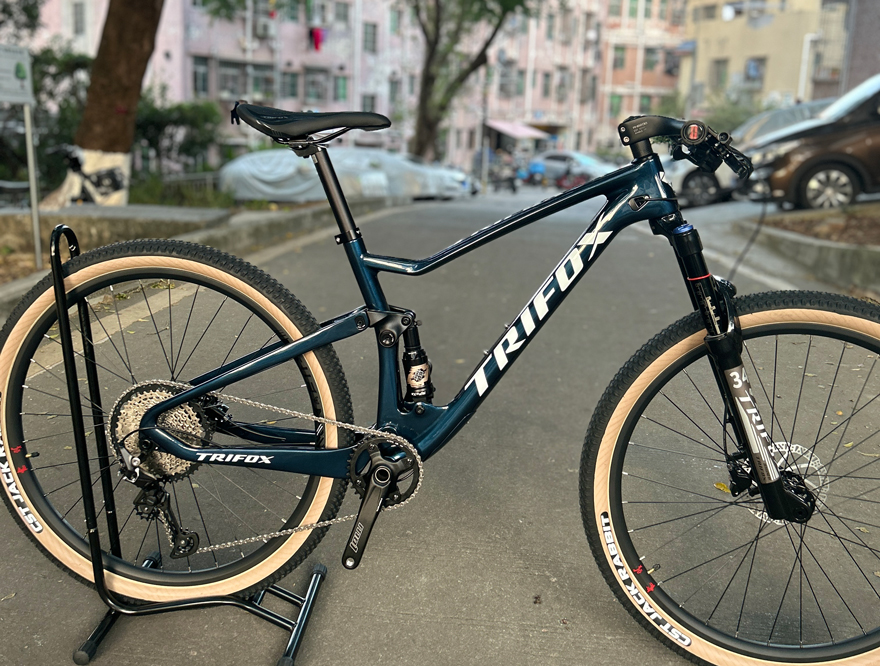
In conclusion, cross country mountain bikes like the TRIFOXBIKE PIONEER are ideal for adventurous riders due to their innovative design and advanced features. The combination of a carbon fiber frame, dual suspension, and a state-of-the-art groupset like the SHIMANO M6100, all work harmoniously to provide an unparalleled biking experience.
These elements ensure that riders can tackle diverse terrains with ease, maintain high levels of comfort and control, and push their limits on every ride. For those who seek adventure in the great outdoors, a cross country mountain bike is not just a mode of transport, but a gateway to new experiences and thrills.
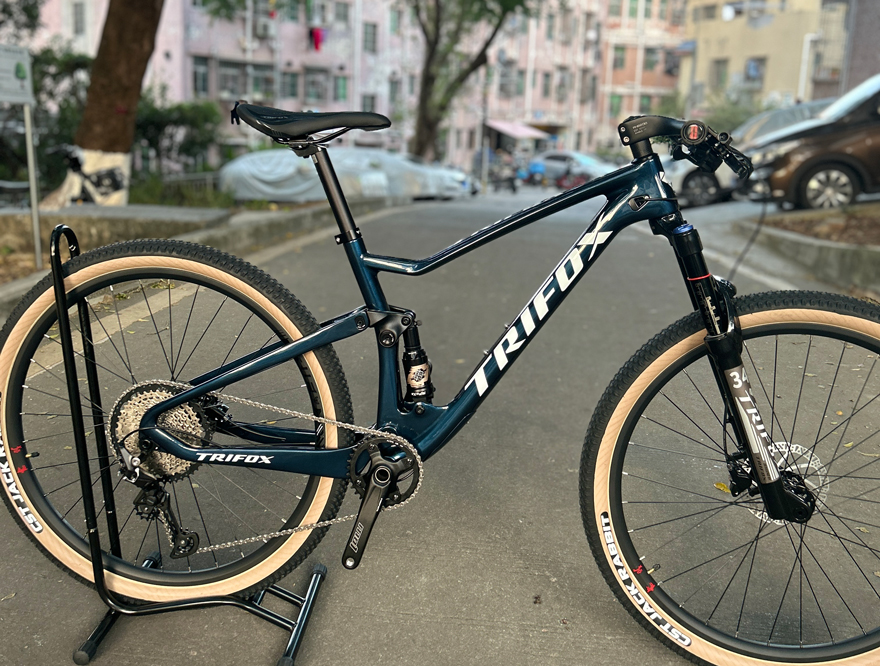
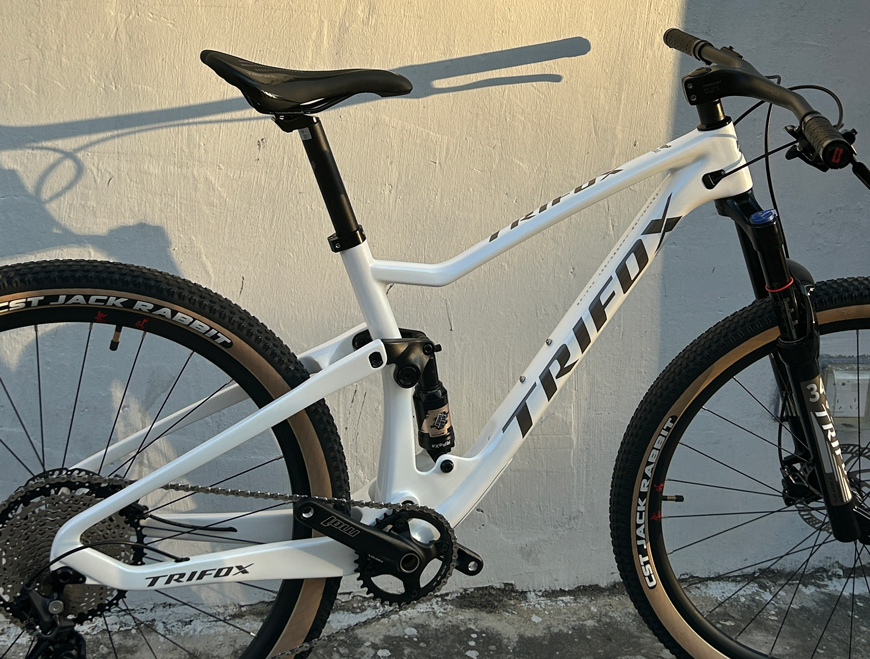
In the rapidly evolving world of mountain biking, the best MTB bikes of 2024 are pushing the boundaries of design and technology, offering riders unparalleled performance and experience on the trails. Emerging trends showcase bikes that are not only lighter and faster but also more durable and versatile, catering to a wide range of riding styles and terrains.
Innovative Use of Carbon Materials
One of the standout features of 2024’s best mountain bikes is the extensive use of carbon fiber. Known for its incredible strength-to-weight ratio, carbon fiber allows for the creation of frames that are both lightweight and robust. This material is a game-changer in the MTB world, providing riders with bikes that can handle rugged trails and steep climbs with ease. Trifox Bike’s carbon mountain bikes, such as the Pioneer and M2, exemplify this trend, offering frames that are not only aesthetically pleasing but also performance-optimized.
Advanced Suspension Systems
The latest mountain bikes boast highly sophisticated suspension systems that significantly enhance comfort and control. Full suspension bikes, like those offered by Trifox, help absorb shocks from rough terrain, allowing for smoother rides and better traction. This technology is crucial for riders tackling technical trails, as it maintains stability and maximizes power transfer, ensuring that every pedal stroke counts. Whether you’re a downhill enthusiast or a cross-country racer, the improved suspension in 2024 models makes navigating challenging paths a breeze.
Cutting-Edge Technology and Components
Modern MTB bikes are also incorporating advanced technology to optimize rider performance. From electronic shifting systems that provide precise gear changes to smart sensors that monitor bike metrics, these innovations offer an edge to tech-savvy cyclists. Trifox’s high-end models are equipped with such features, enabling riders to fine-tune their rides and push their limits safely and efficiently.
Versatility and Customization
The best mountain bikes of 2024 are designed to cater to a broad spectrum of riders and conditions. Whether you’re an adrenaline junkie seeking downhill thrills or a leisure rider exploring scenic trails, there’s a bike tailored for your needs. Trifox offers a range of customization options, allowing cyclists to choose components that match their riding style and preferences. This versatility ensures that every rider can find a bike that feels like a natural extension of themselves, enhancing their overall experience.
Performance-Driven Design
A focus on aerodynamic and ergonomic design is another hallmark of top MTB bikes this year. Streamlined frames and components reduce drag, while ergonomic adjustments improve rider comfort, particularly on long rides. The Pioneer model, for example, emphasizes both speed and stability, making it a preferred choice for competitive riders. Meanwhile, the M2 model offers a balance of power and agility, suitable for those who enjoy a mix of terrains.
Eco-Friendly Manufacturing
Sustainability has become a significant consideration in the manufacturing of 2024’s best mountain bikes. Brands like Trifox are adopting eco-friendly production practices, using recyclable materials and reducing waste. This commitment not only benefits the environment but also appeals to the growing number of environmentally conscious consumers.
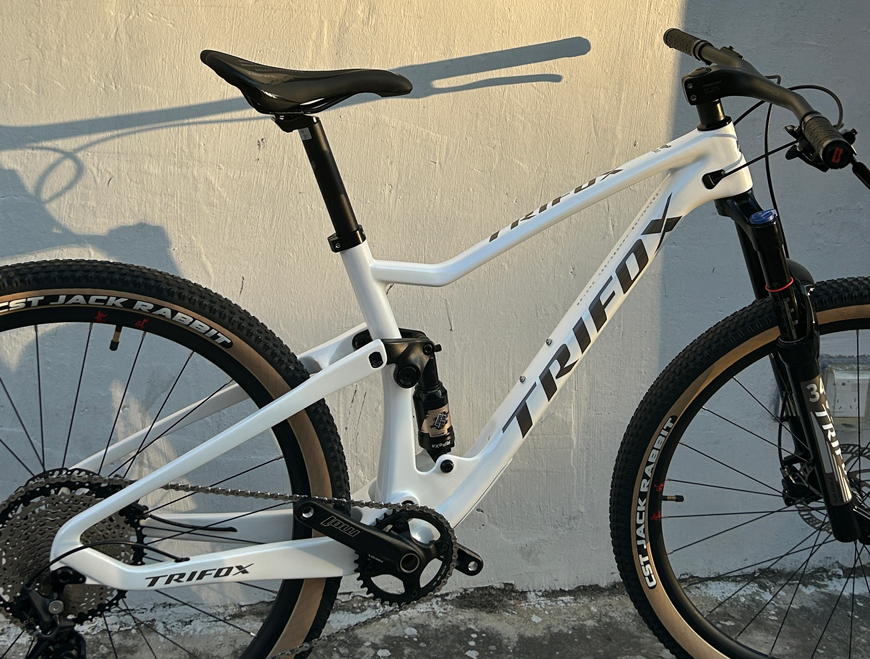
In conclusion, the best MTB bikes of 2024 stand out due to their innovative use of materials, advanced technology, and thoughtful design. By incorporating cutting-edge features and eco-friendly practices, these bikes offer an enhanced riding experience that meets the demands of modern cyclists. Whether you’re drawn to the sleek design of the Pioneer or the versatile performance of the M2, Trifox’s offerings provide excellent examples of what to expect in this exciting new era of mountain biking.

Choosing the perfect ultra light hardtail mountain bike for your next adventure involves understanding the key features that will enhance your riding experience.
When considering options like the Trifox SDY20, start by focusing on the frame material. This bike boasts a 29er carbon mountain hardtail frame made from T1000 carbon fiber, which is renowned for its strength-to-weight ratio. The lightweight nature of carbon frames not only makes climbing hills easier but also improves maneuverability on technical trails.
Weight is another crucial factor. The SDY20 weighs approximately 11.5 kg for a large size, making it an excellent choice for riders who prioritize speed and agility. A lighter bike allows for quicker acceleration and less fatigue over long rides, key benefits when tackling challenging terrains.
Drivetrain components are equally important. The SDY20 features a SHIMANO Deore M6100, 12-speed system, which provides smooth and reliable gear shifts. This setup is ideal for adapting to varying trail conditions, giving you the flexibility to maintain momentum whether you're climbing or descending.
Wheel specifications, such as the Trifox Alloy Mountain Bike Wheels and CST 29*2.1 tires, offer stability and control. Wider tires improve traction and handling, crucial for maintaining grip on rough surfaces.
When selecting the right size, consider your height and inseam. The SDY20 offers sizes from S to L, accommodating riders from 150 to 185 cm tall. Ensuring the bike fits well enhances comfort and control, which are vital for a safe and enjoyable ride.
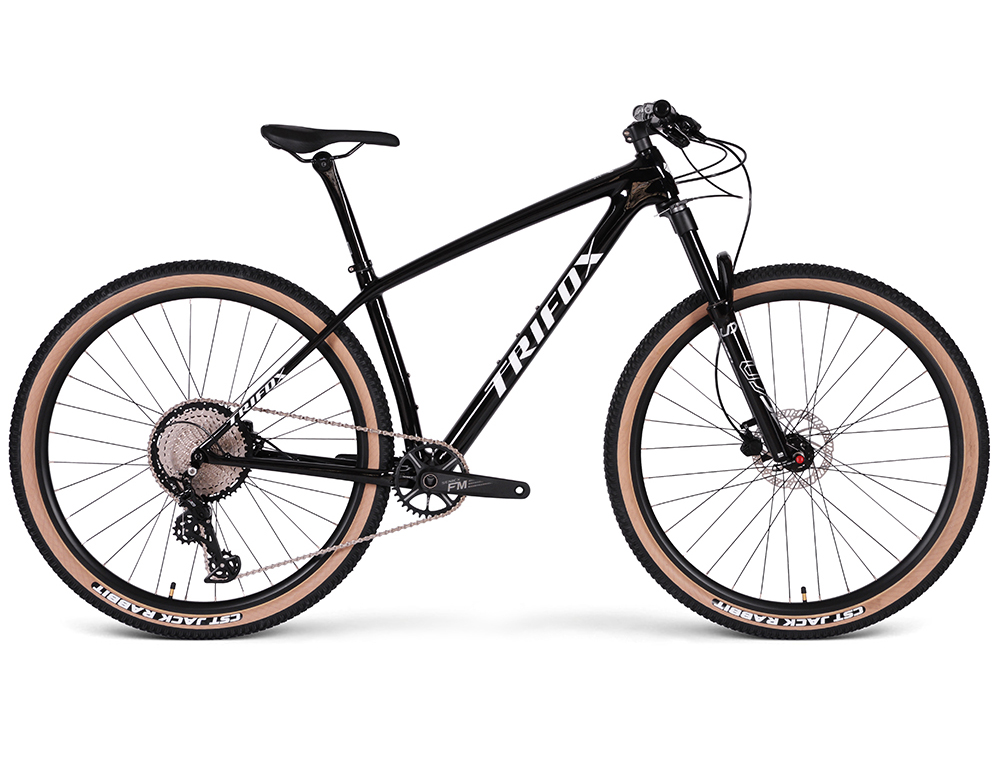
Overall, choosing an ultra light hardtail MTB with a carbon frame like the SDY20 offers numerous benefits, including enhanced performance and comfort, making it a worthy companion for your next mountain biking adventure.
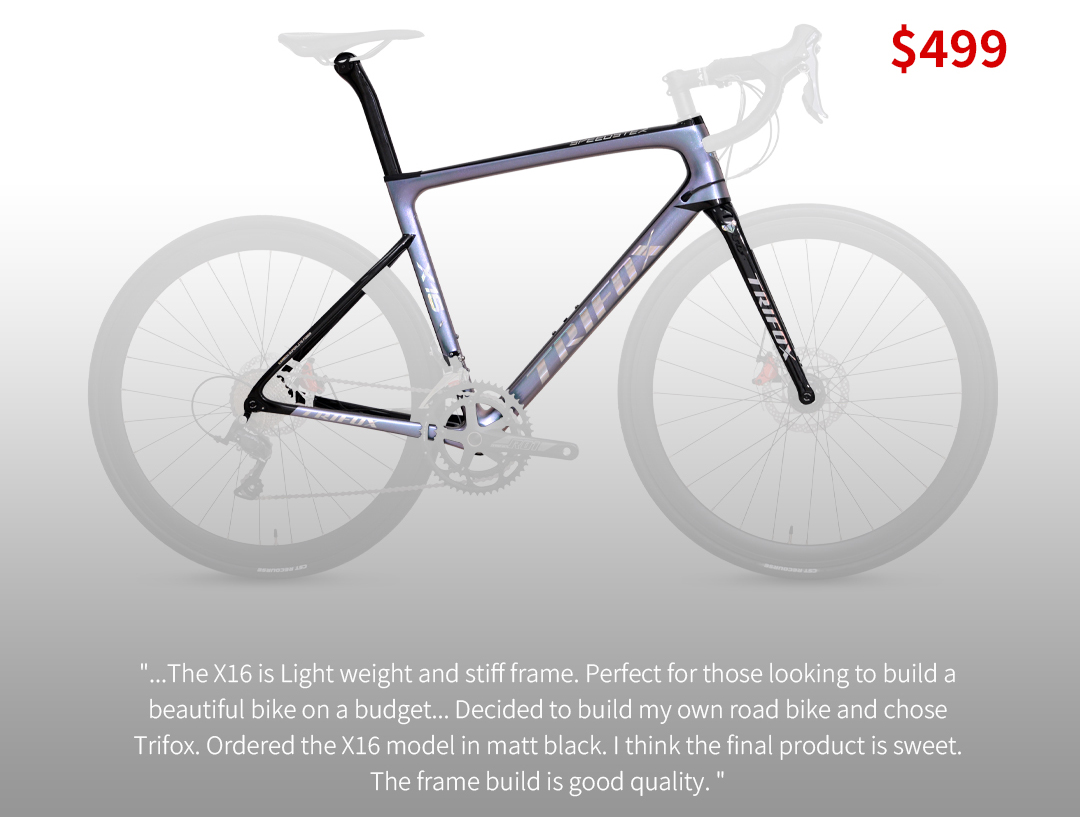
The world of cycling has evolved significantly, with advancements in technology bringing forth the era of fully carbon bicycles. These marvels of engineering offer a host of advantages that have revolutionized the cycling experience for both competitive cyclists and casual riders alike.
One of the standout features of carbon bicycles is their incredibly lightweight nature.
Made from carbon fiber, these bikes are significantly lighter than their aluminum or steel counterparts, allowing for easier handling and greater speed on the road. This reduction in weight translates into less effort required to pedal, making long rides more enjoyable and less taxing on the body.
Durability is another key benefit of carbon bicycles. Despite being lightweight, carbon fiber provides a strong and resilient frame that can withstand the rigors of various terrains.
This durability means that cyclists can tackle challenging trails with confidence, knowing their bike can handle the pressure without compromising structural integrity.
Performance benefits are at the heart of why many cyclists opt for carbon bikes. The material's ability to dampen road vibrations leads to a smoother ride, reducing fatigue and enhancing comfort over long distances. This is particularly beneficial for road cyclists who aim to push their limits in terms of speed and endurance.
In addition to personal advantages, using bicycles as a mode of transport offers significant environmental benefits. Bicycles are a zero-emission mode of transport, contributing to reduced carbon footprints and promoting a healthier planet. With increased awareness of environmental issues, choosing a bicycle over a car for short trips can make a tangible difference.
Trifox Bike, a leader in the production of high-quality carbon bicycles, exemplifies the benefits of these innovative bikes. With a commitment to precision engineering and customer satisfaction, Trifox offers products that enhance the cycling experience through superior design and technology. Their dedication to quality and sustainability makes them a trusted choice for cyclists seeking the best in carbon bike performance.
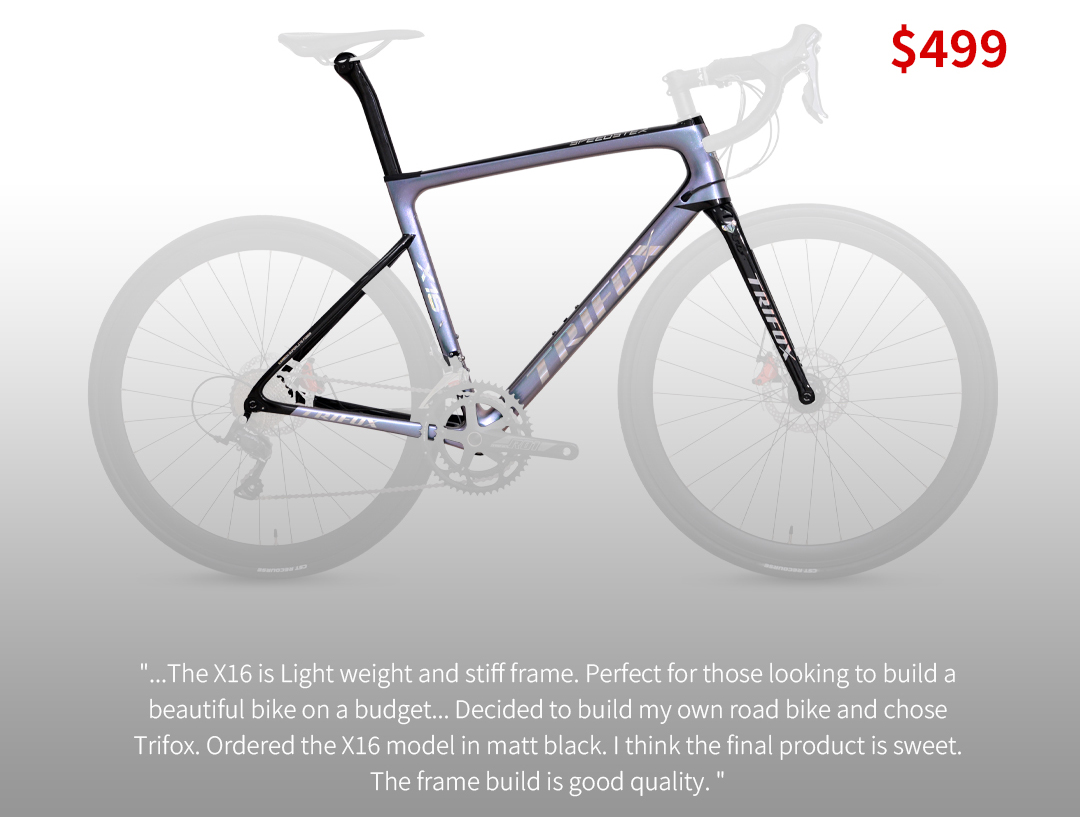
In summary, fully carbon bicycles offer unmatched advantages in terms of weight, durability, and performance, making them a worthwhile investment for any cycling enthusiast. Whether you're commuting to work or exploring new trails, a carbon bike transforms every ride into a more efficient and exhilarating journey.
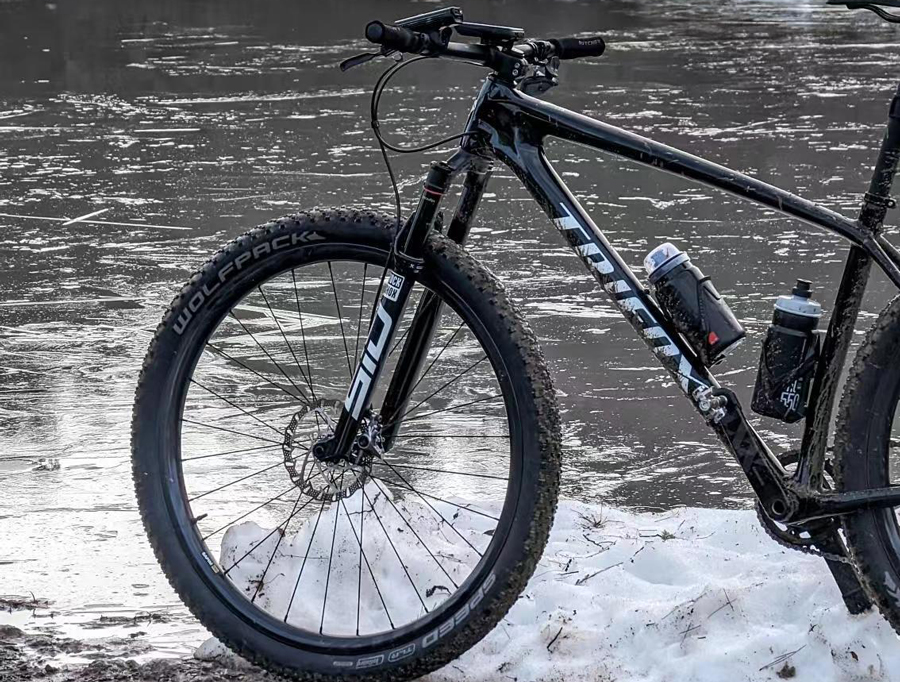
Upgrading to a lightness frame can be a game-changer for cyclists aiming to enhance their performance.
The Ultra Light 29er Carbon Hardtail MTB Frame SDY20 by Trifox is a prime example of how a lightweight frame can elevate your riding experience.
One of the standout features of the SDY20 is its construction using T1000 carbon fiber, renowned for its strength-to-weight ratio. This material ensures the frame is both robust and remarkably light, with weights starting at just 930g. Such a reduction in weight not only boosts speed but also enhances maneuverability, making climbs and sprints more efficient.
The frame’s internal cable routing is another feature that contributes to a superior cycling experience.
This design not only offers a sleek aesthetic but also reduces wind resistance and protects cables from external elements, ensuring consistent performance and easier maintenance.
Additionally, the frame's compatibility with tires up to 29" x 2.4" allows for smoother rides over rough terrains, absorbing shocks and providing better traction. This adaptability means cyclists can tackle a variety of landscapes with confidence.
The SDY20 also features a Boost 148mm rear axle for increased stiffness, which enhances handling and stability, especially during sharp turns or high-speed descents. Whether you’re navigating rocky trails or cruising on smoother paths, this frame’s geometry is optimized for comfort and performance.
Incorporating these advanced features, the SDY20 frame ensures that cyclists not only ride faster but also experience improved control and reduced fatigue, making it an excellent choice for those looking to enhance their cycling performance.
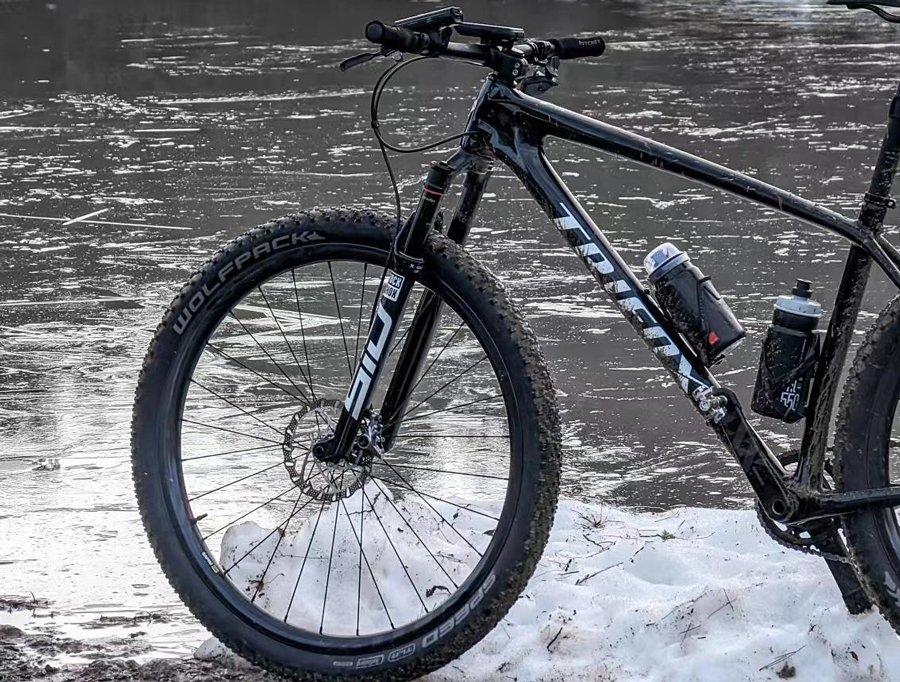
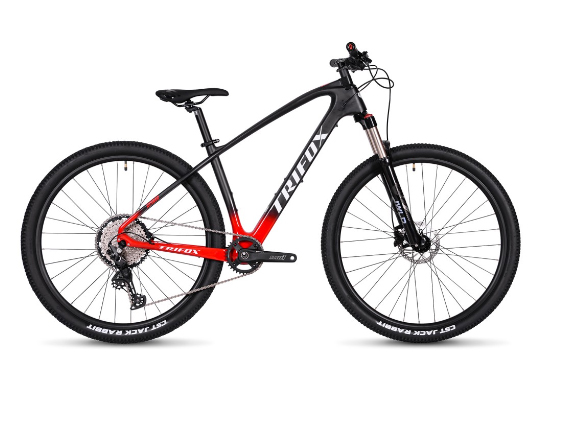
Selecting and maintaining a durable mountain bike (MTB) frame is essential for conquering rugged trails and ensuring your ride's longevity. Here's how to make the best choice and keep your frame in top shape.
1. Choose the Right Material
The material of your MTB frame plays a critical role in its durability. Carbon fiber frames, like the Trifox MFM200, are renowned for their strength and lightweight properties. This advanced carbon material provides excellent shock absorption and resilience against the rigors of off-road riding.
2. Look for Reinforced Areas
Durable MTB frames often feature reinforced areas, such as the bottom bracket and head tube, which endure high stress during rides. The Trifox MFM200 is designed with these reinforcements, ensuring it can withstand intense impacts and rough terrain.
3. Ensure Proper Fit
A well-fitting frame enhances control and reduces fatigue, contributing to the overall durability of your ride. Make sure to choose a frame size that matches your height and riding style for optimal performance.
4. Regular Cleaning
Clean your frame regularly to remove dirt, mud, and debris that can cause wear and corrosion. Use gentle cleaning solutions and avoid high-pressure water, which can damage the frame's finish and internal components.
5. Inspect for Damage
Frequently inspect your frame for cracks, dents, or other signs of damage. Pay special attention to joints and welds. Early detection of issues allows for timely repairs, preventing minor problems from escalating.
6. Apply Protective Coatings
Consider applying a protective coating to your frame to shield it from scratches and UV damage. This adds an extra layer of defense against the elements, prolonging the frame’s life.
7. Proper Storage
Store your bike in a dry, cool place to prevent exposure to moisture and extreme temperatures. Invest in a bike stand or wall mount to keep it off the ground and reduce the risk of accidental damage.
By carefully selecting a durable MTB frame like the Trifox MFM200 and following these maintenance tips, you can ensure a reliable and long-lasting ride, ready to tackle any trail.
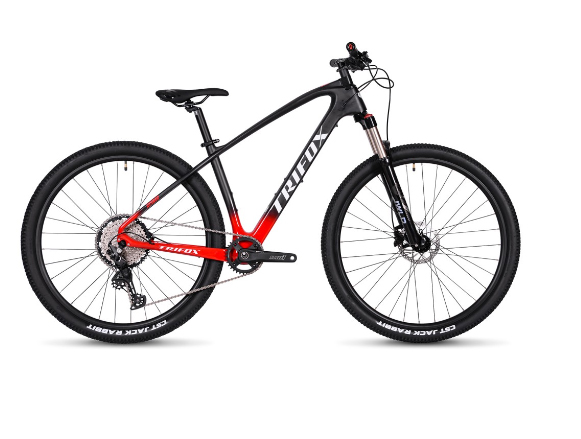
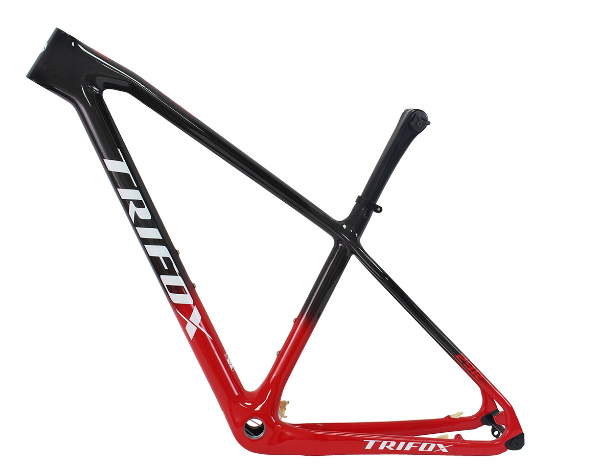
Setting up a full internal cable routing frame can drastically enhance the aesthetics and performance of your bike. By hiding the cables within the frame, you achieve a cleaner look while also reducing drag and preventing cable damage. Here’s a step-by-step guide to setting up a full internal cable routing frame for that sleek, professional appearance.
1. Choose the Right Frame
The first step is selecting a frame designed for internal cable routing. The Trifox SDY21 Carbon MTB Hardtail Frame is an excellent choice. This lightweight, robust frame not only provides the benefits of a carbon build but also features internal routing capabilities that keep your cables protected and out of sight.
2. Gather Necessary Tools and Components
Before you start, ensure you have all the necessary tools and components. You’ll need high-quality cables, housing, a cable cutter, a pick tool, and possibly a magnetic routing kit to help guide the cables through the frame. Having the right tools will make the process smoother and more efficient.
3. Plan Your Cable Paths
Map out the paths each cable will take through your frame. Identify the entry and exit points, and ensure there are no sharp bends that could affect cable performance. The Trifox SDY21 features well-placed entrances and exits to simplify this process, giving you a clear path for routing.
4. Prepare the Frame
Before inserting the cables, make sure the frame is clean and free of any debris. Use a clean cloth to wipe down the inside of the frame tubes if necessary. This prevents any dirt or grime from causing friction or wear on the cables.
5. Insert the Cables
Start with one cable at a time. If you're using a magnetic routing kit, attach the magnet to the end of the cable and guide it through the frame using the magnet on the outside. If not, gently push the cable through, using a pick tool to help navigate through tight spots. Repeat this for each cable, ensuring they follow the planned paths.
6. Secure the Cables
Once the cables are routed through the frame, secure them properly to prevent movement. Use internal cable guides or foam tube sleeves to minimize noise and protect the cables from damage. The Trifox SDY21 frame is designed to accommodate these guides, making it easier to keep everything in place.
7. Connect Components
With the cables routed and secured, connect them to the corresponding components—derailleurs, brakes, and shifters. Test each connection to ensure everything is functioning correctly.
8. Final Adjustments
Make final adjustments to the cable tension and trim any excess housing. Check that all cables move smoothly without any resistance, and make sure the bike operates efficiently.
9. Regular Maintenance
Even with the best setup, periodic maintenance is essential. Inspect the cables regularly for any signs of wear or damage, and replace them as needed to maintain optimal performance.
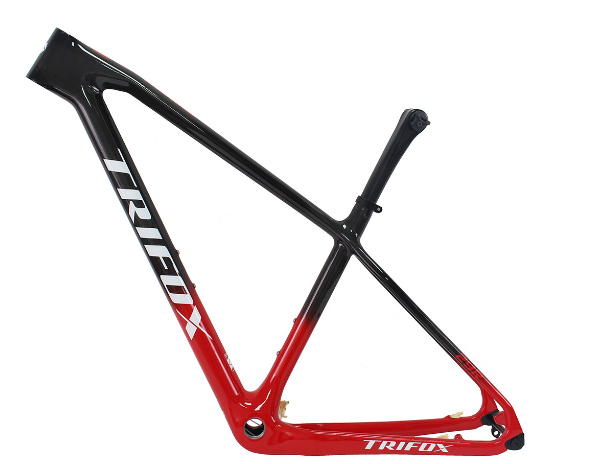
By following these steps, you can achieve a sleek, professional appearance with a full internal cable routing frame. The Trifox SDY21 Carbon MTB Hardtail Frame offers an ideal platform for this setup, combining advanced materials with thoughtful design to enhance both form and function.

Choosing the right hardtail mountain bike (MTB) frame is crucial for optimizing your trail riding experience. A hardtail frame, which lacks rear suspension, offers a lightweight and efficient ride ideal for various terrains. Here's a guide on how to select and install a hardtail MTB frame, using the Trifox Carbon MTB Hardtail Frame MFM200 as an example.
Selecting the Right Frame
1. Material
The material of your frame affects weight, strength, and ride quality. The Trifox MFM200 is crafted from carbon fiber, known for its superior strength-to-weight ratio, providing excellent durability without compromising on performance.
2. Geometry
Frame geometry influences handling and comfort. Look for a frame like the MFM200 with a balanced geometry that offers stability on descents and agility on climbs.
3. Compatibility
Ensure the frame is compatible with your current components or any new ones you plan to install. Check for compatibility with wheel size, fork travel, and bottom bracket type.
Installing the Frame
1. Prepare Your Components
Gather all necessary components: fork, headset, bottom bracket, drivetrain, brakes, and wheels. Ensure they are clean and in good condition.
2. Install the Headset and Fork
Begin by installing the headset into the frame’s head tube, followed by the fork. Make sure these components are securely fitted.
3. Bottom Bracket and Crankset
Install the bottom bracket according to the manufacturer's specifications, then attach the crankset.
4. Drivetrain Setup
Mount the front and rear derailleurs, chain, and cassette. Adjust the derailleurs for smooth shifting.
5. Brakes and Wheels
Attach the brake calipers to the frame and install the wheels. Align the brake rotors with the calipers and ensure everything is properly tightened.
6. Final Adjustments
Check all components for tightness and alignment. Adjust the seat post, saddle, and handlebars to your preferred riding position.

By selecting a high-quality frame like the Trifox Carbon MTB Hardtail Frame MFM200 and following these installation steps, you'll be well on your way to enjoying optimal performance on the trails.
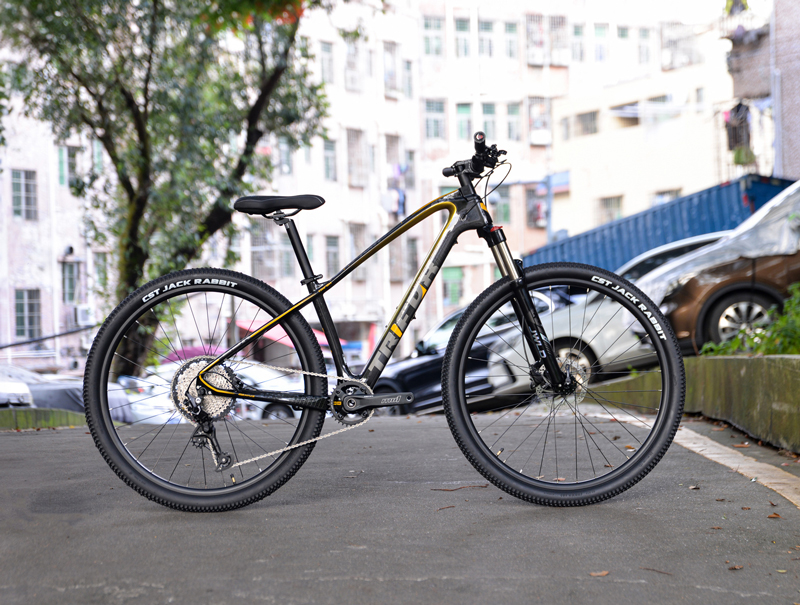
Building a bike with a high-quality hardtail frame can be an incredibly rewarding project, offering customization and performance tailored to your specific needs. Here's a step-by-step guide to help you get started.
1. Choose the Right Frame
Start with a reliable and high-quality frame like the Trifox Carbon MTB Hardtail Frame MFM200. Known for its lightweight construction and durability, this frame provides an excellent foundation for your build.
2. Gather Essential Components
Next, you'll need to gather all essential components:
Fork: Choose a suspension fork that matches your riding style.
Groupset: A high-quality groupset ensures smooth shifting and efficient power transfer.
Wheels and Tires: Select wheels that are strong yet light, along with tires suited for your terrain.
Brakes: Reliable disc brakes offer superior stopping power.
3. Assemble the Drivetrain
Install the bottom bracket and crankset first, followed by the chain and derailleur. Ensure everything is aligned correctly for optimal performance.
4. Install the Fork and Handlebars
Slide the fork into the head tube and secure it with the stem. Attach the handlebars, making sure they are at a comfortable height and angle.
5. Add the Wheels and Brakes
Mount the wheels onto the frame and install the disc brakes. Make sure the brakes are properly aligned to avoid any rubbing against the rotors.
6. Final Adjustments
Adjust the saddle height, handlebar position, and brake lever reach to fit your body perfectly. Tighten all bolts securely and check for any loose parts.
7. Test Ride
Before hitting the trails, take your new bike for a test ride. Ensure everything functions smoothly and make any necessary tweaks.
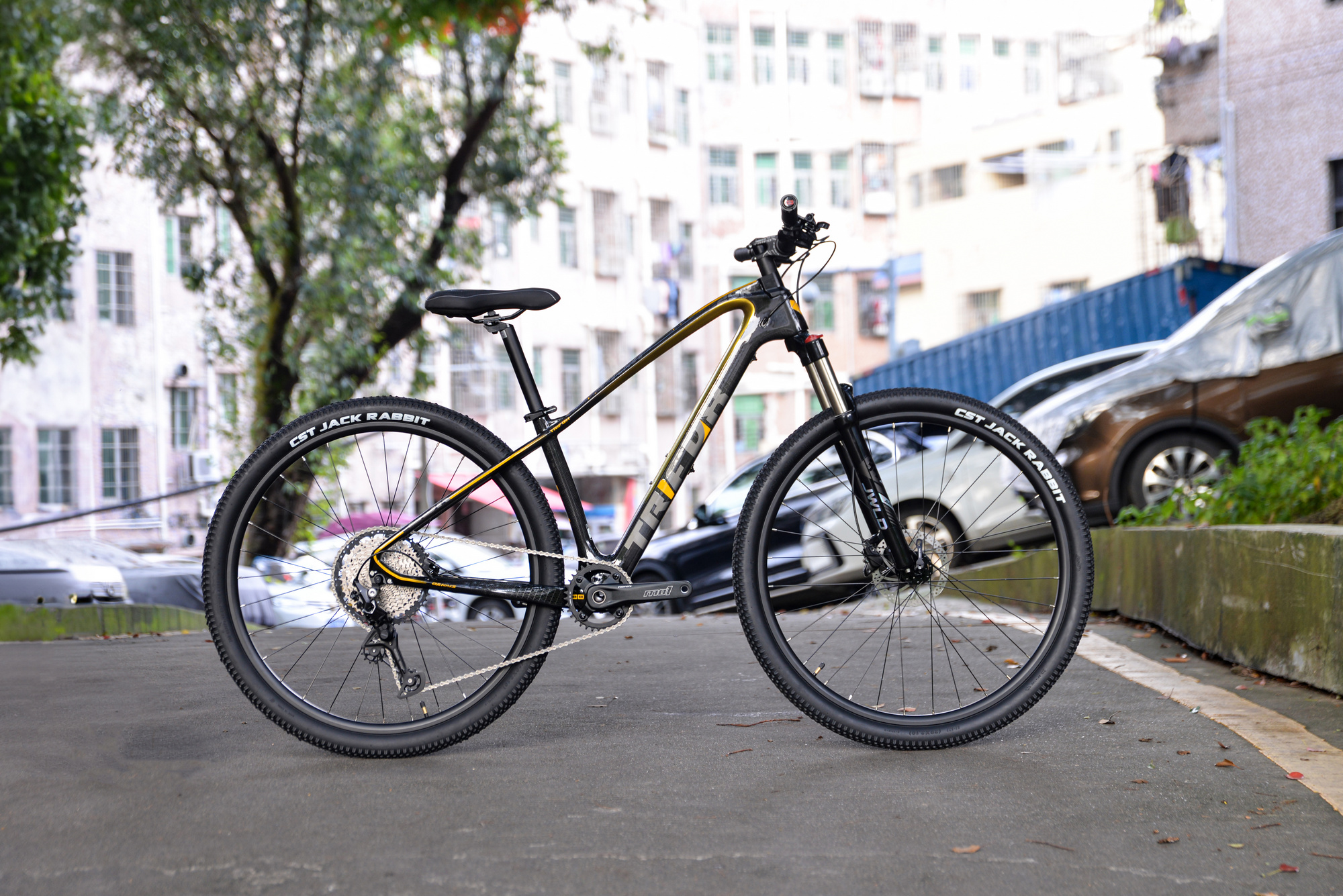
Conclusion
Building a bike with a high-quality hardtail frame like the Trifox Carbon MTB Hardtail Frame MFM200 is a fulfilling endeavor that results in a personalized, high-performance ride. Follow these steps for a successful build and enjoy the unmatched satisfaction of riding a bike you've built yourself. Happy trails!

























































